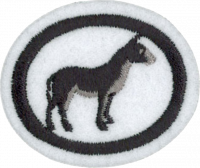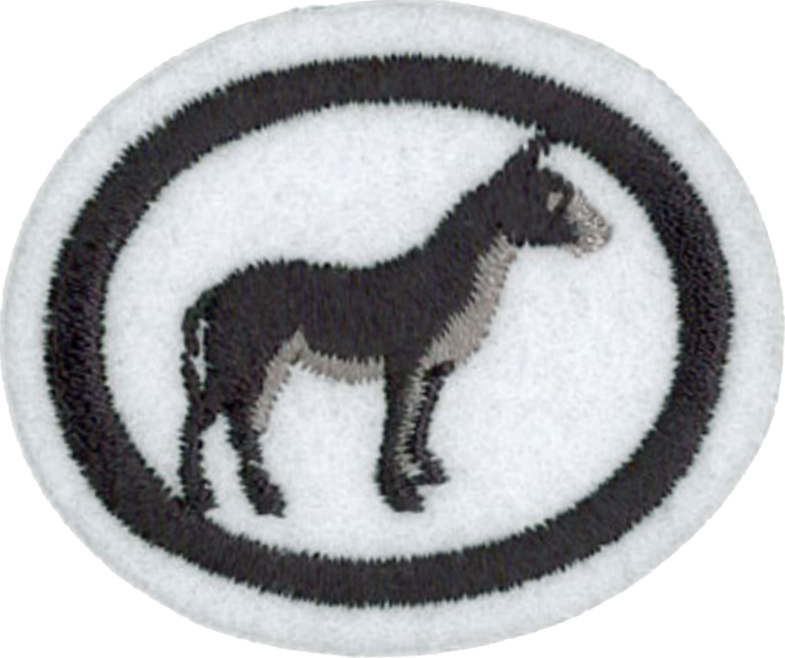Difference between revisions of "AY Honors/Livestock/Answer Key/es"
(Created page with "</noinclude> ==Referencias== Category:Adventist Youth Honors Answer Book/es <noinclude>") |
(Created page with "</noinclude> <!-- 3. Hacer una lista de cuatro características físicas de la mula. -->") |
||
| Line 11: | Line 11: | ||
{{CloseReq}} <!-- 1 --> | {{CloseReq}} <!-- 1 --> | ||
{{ansreq|page={{#titleparts:{{PAGENAME}}|2|1}}|num=2}} | {{ansreq|page={{#titleparts:{{PAGENAME}}|2|1}}|num=2}} | ||
| − | <noinclude> | + | <noinclude></noinclude> |
| − | </noinclude> | + | <!-- 2. Identificar a partir de fotos o de observación personal, y registrar la altura, el peso, el color y la disposición de al menos tres de los siguientes caballos: --> |
| − | <!-- 2. | + | <noinclude></noinclude> |
| − | <noinclude | ||
| − | |||
{{ansreq|page={{#titleparts:{{PAGENAME}}|2|1}}|num=2a}} | {{ansreq|page={{#titleparts:{{PAGENAME}}|2|1}}|num=2a}} | ||
<noinclude></noinclude> | <noinclude></noinclude> | ||
| Line 45: | Line 43: | ||
{{CloseReq}} <!-- 2 --> | {{CloseReq}} <!-- 2 --> | ||
{{ansreq|page={{#titleparts:{{PAGENAME}}|2|1}}|num=3}} | {{ansreq|page={{#titleparts:{{PAGENAME}}|2|1}}|num=3}} | ||
| − | <noinclude> | + | <noinclude></noinclude> |
| − | </noinclude> | + | <!-- 3. Hacer una lista de cuatro características físicas de la mula. --> |
| − | <!-- 3. | ||
| − | |||
| − | |||
| − | |||
| − | |||
| − | |||
| − | |||
| − | |||
| − | |||
<noinclude></noinclude> | <noinclude></noinclude> | ||
{{CloseReq}} <!-- 3 --> | {{CloseReq}} <!-- 3 --> | ||
{{ansreq|page={{#titleparts:{{PAGENAME}}|2|1}}|num=4}} | {{ansreq|page={{#titleparts:{{PAGENAME}}|2|1}}|num=4}} | ||
| − | <noinclude> | + | <noinclude></noinclude> |
| − | </noinclude> | + | <!-- 4. Identificar un burro de una imagen o en vivo. Dar su tamaño, color y utilidad. --> |
| − | <!-- 4. | ||
| − | |||
| − | |||
| − | |||
| − | |||
<noinclude></noinclude> | <noinclude></noinclude> | ||
Revision as of 18:34, 15 April 2021
Nivel de destreza
2
Año
1945
Version
19.12.2025
Autoridad de aprobación
Asociación General
1
2
2a
2b
2c
2d
2e
3
4
5
6
- Jersey
- Brown Bessie, the famous champion butter cow of the Chicago World's Fair dairy test, averaged over 40 pounds (18 kg) of milk a day for five months, and made 3 pounds (1.3 kg) of butter a day several times.
- Guernsey
- Las vacas Guernsey producen alrededor de 6.000 litros por vaca por año, o 16.4 litros (4.3 galones) por día.
- Holstein
- Las vacas registradas en los Estados Unidos produjeron 22.347 libras (10,158 kg) de leche con 3,64% de grasa y 3,05% de proteína.
7
The word milch is German for milk, so one might correctly infer that the milch goat is one that has been bred for milk production. An angora goat is bred for wool production. Adventist Youth Honors Answer Book/Goat Breeds/Saanen
Adventist Youth Honors Answer Book/Goat Breeds/Toggenburg/es
Adventist Youth Honors Answer Book/Goat Breeds/Nubian/es
Adventist Youth Honors Answer Book/Goat Breeds/British Alpine/es
8
Adventist Youth Honors Answer Book/Sheep Breeds/Rambouillet/es
Adventist Youth Honors Answer Book/Sheep Breeds/Shropshire/es
Adventist Youth Honors Answer Book/Sheep Breeds/Hampshire/es
Adventist Youth Honors Answer Book/Sheep Breeds/Lincoln/es


